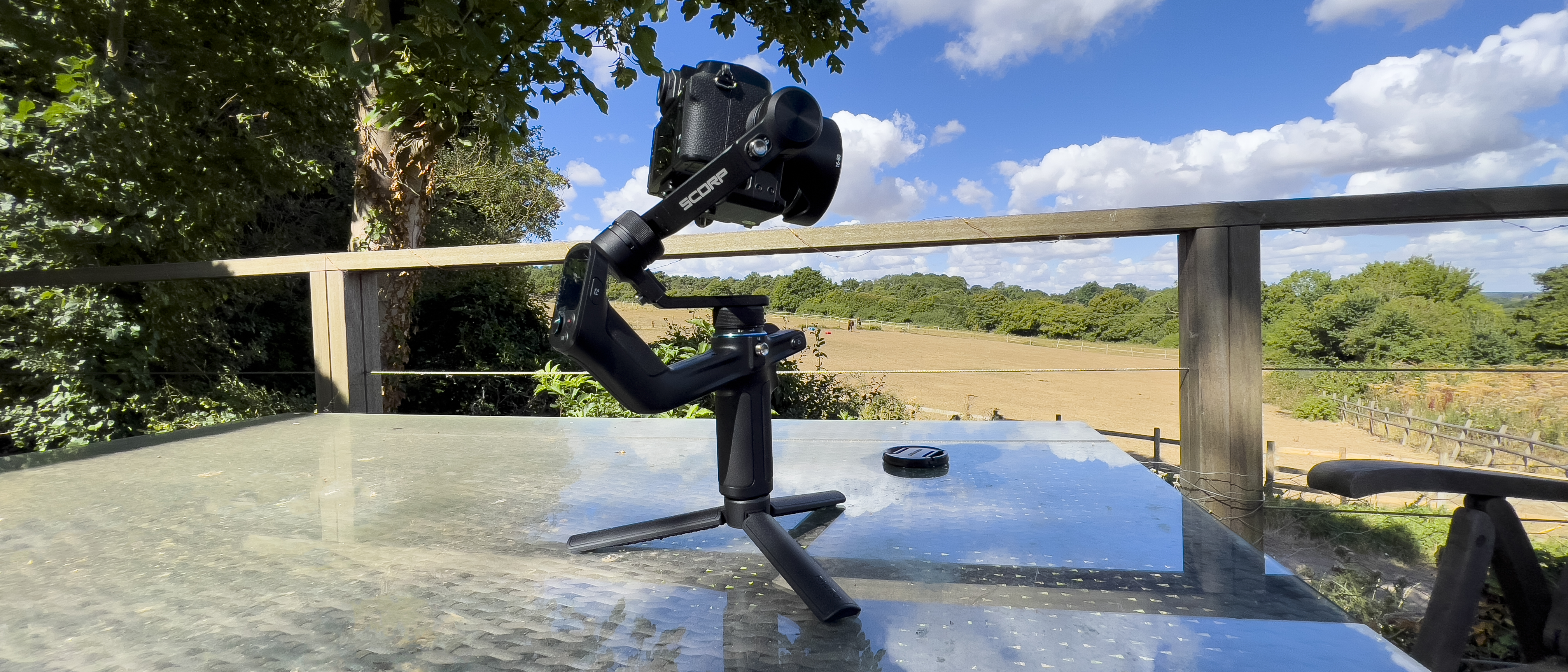Digital Camera World Verdict
The FeiyuTech Scorp Mini is an incredibly lightweight and manoeuvrable gimbal that will suit the needs of smartphone and mirrorless camera users when it comes to shooting pans, tilts and tracking shots while keeping your horizon level. The sling arm enables you to get low angle shots with ease and you can also make smooth moves using the tactile front knob and rear joystick.
Pros
- +
Compact size
- +
Light weight
- +
Sling arm for low angles
- +
Programmable dial
Cons
- -
Occasional vibration
- -
Didn’t auto track subject via app
- -
Longer lens combos may not fit
Why you can trust Digital Camera World
The The FeiyuTech Scorp Mini joins an already crowded gimbal market, so what can this model do that's different to what we can get already?
In recent years video makers have become spoiled for choice when deciding which device to use to capture footage. Smartphones and action cameras can now match the 4K HD quality footage produced by more expensive mirrorless cameras. This means that one day we may want to mount an iPhone 13 Pro Max on a gimbal for a discrete stock footage shoot while another project might benefit from a gimbal-mounted mirrorless camera like our Fujifilm X-S10.
Normally, this would need to different gimbals designed for these completely different payloads. However, the FeiyuTech Scorp-Mini is a 3-axis gimbal that can support a wide range of devices. Indeed, it will ship with mounting accessories for a GoPro, smartphone and mirrorless camera. This saves you the hassle and expense of buying different gimbals for different devices. It really is one gimbal to rule them all!
Specifications
Weight: 787g
Payload:1200g
Tilting range: 280°
Rolling range: 290°
Panning range: 360 °
Battery Life: Up to 13 hours
Key features
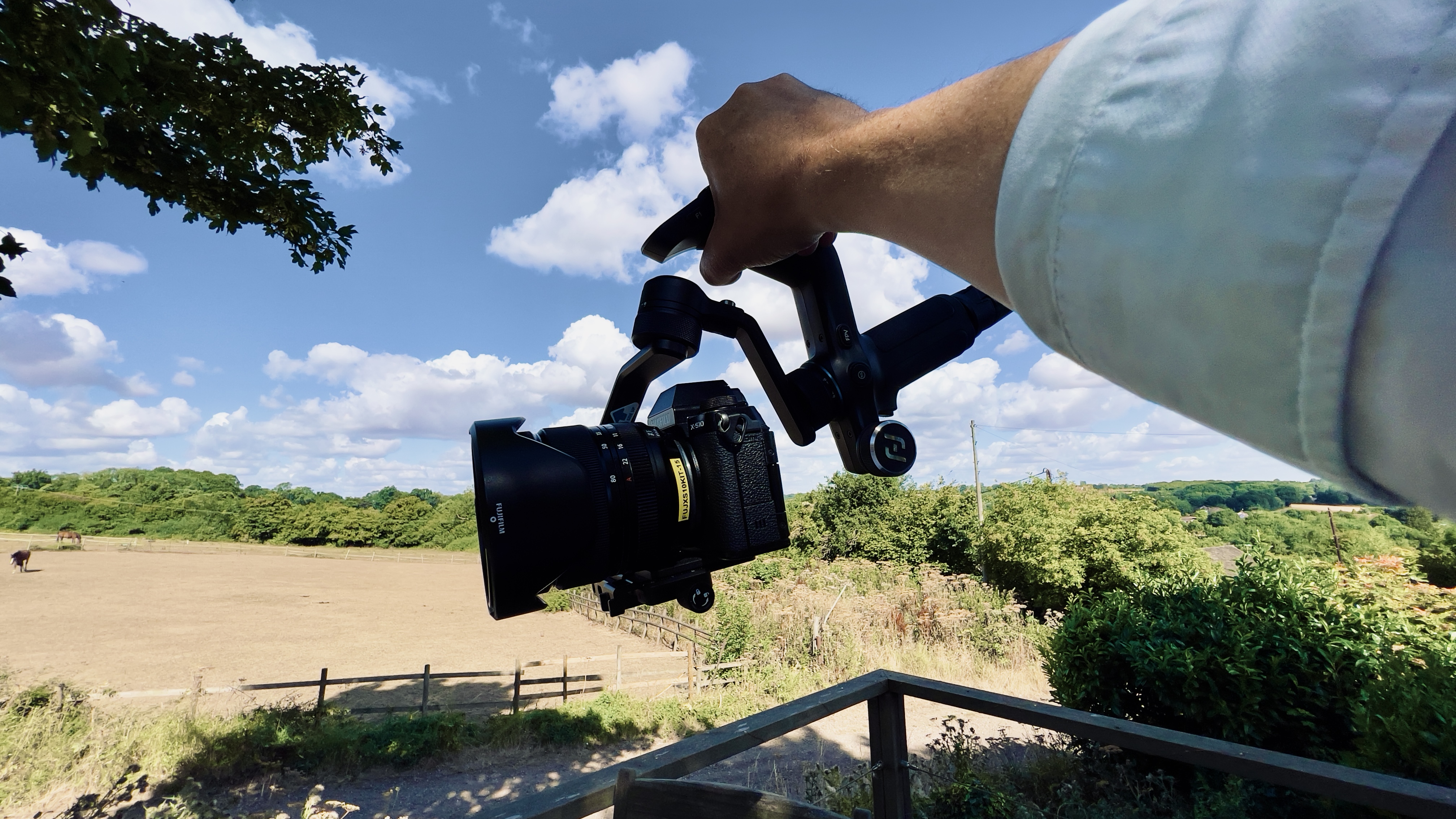
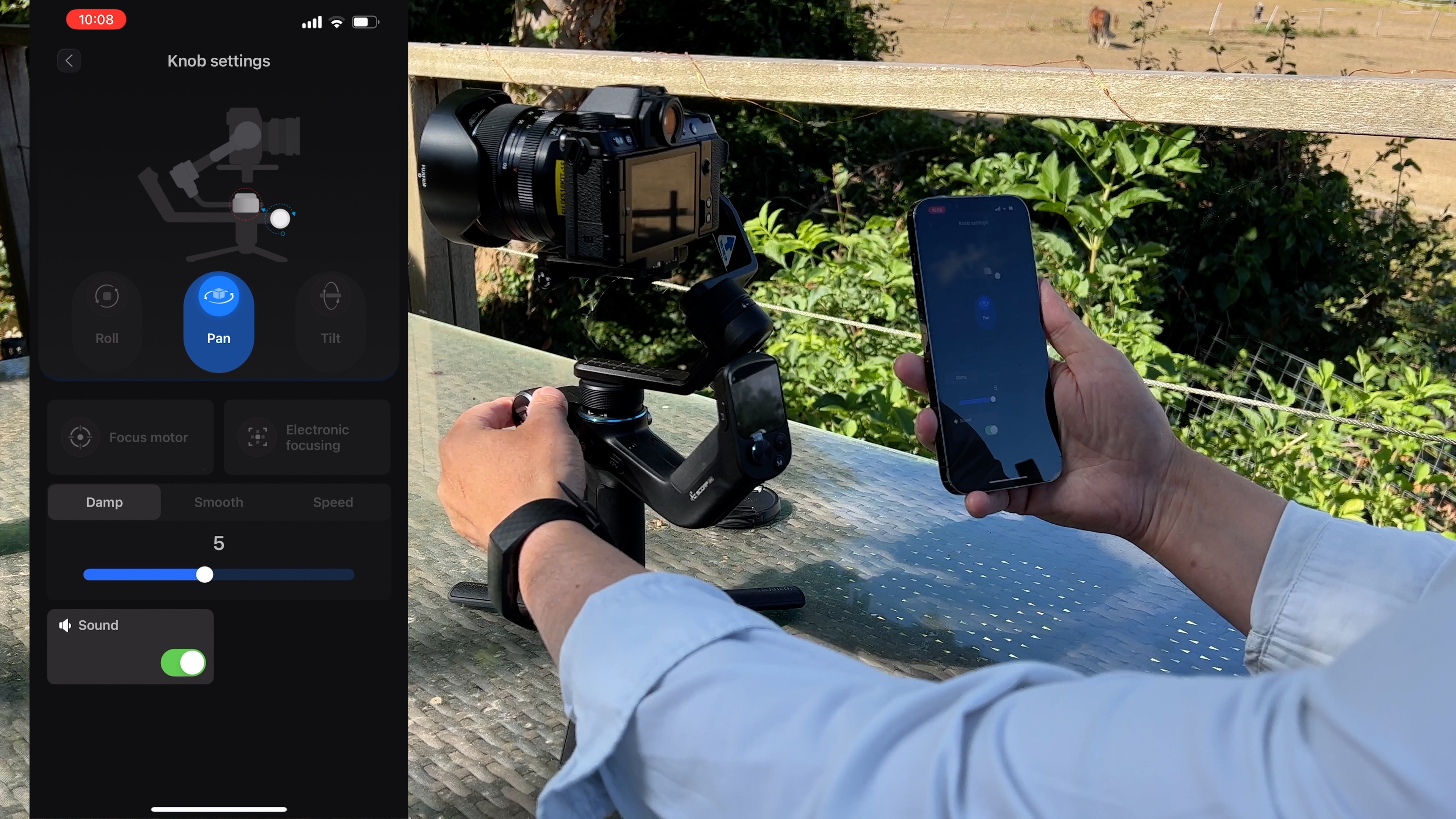
The Scorp Mini is a classic 3-axis gimbal that enables you to perform professional smooth camera moves such as pans and tilts without the hassle of setting up a tripod. It ensures that the horizon is level at all times and irons out any bumps and wobbles in the footage as you track the camera.
Various shooting modes (such as Pan Follow) enable you to make the gimbal pan the camera to follow your hand movements, or pan and tilt (using Pan Tilt Follow). What’s really handy is the rear sling handle which enables you to capture low angle shots with the camera racing horizontally inches above the ground.
You can also perform smooth camera moves such as tilts and pans by moving a joystick at the rear or twiddling a knob at the front. In conjunction with the dedicated Feiyu Scorp app you can also control the gimbal’s movement via a joystick on your smartphone’s screen. There’s even a mode that translates the tilting and panning of your smartphone into remote-controlled tilt and pans on the gimbal.
If you mount a smartphone on the gimbal you can use the Feiyu On app to perform extra tricks such as setting the start and end point for a panning time-lapse sequence. You can also trigger shots using gesture control. However we found that the auto-tracking feature (where you draw a rectangle around a subject on the smartphone’s screen) didn’t work. We’ve successfully used the Feiyu On app’s auto tracking abilities on another FeiyuTech gimbal, the Vimble 3, so we know it can work well.
Build and handling
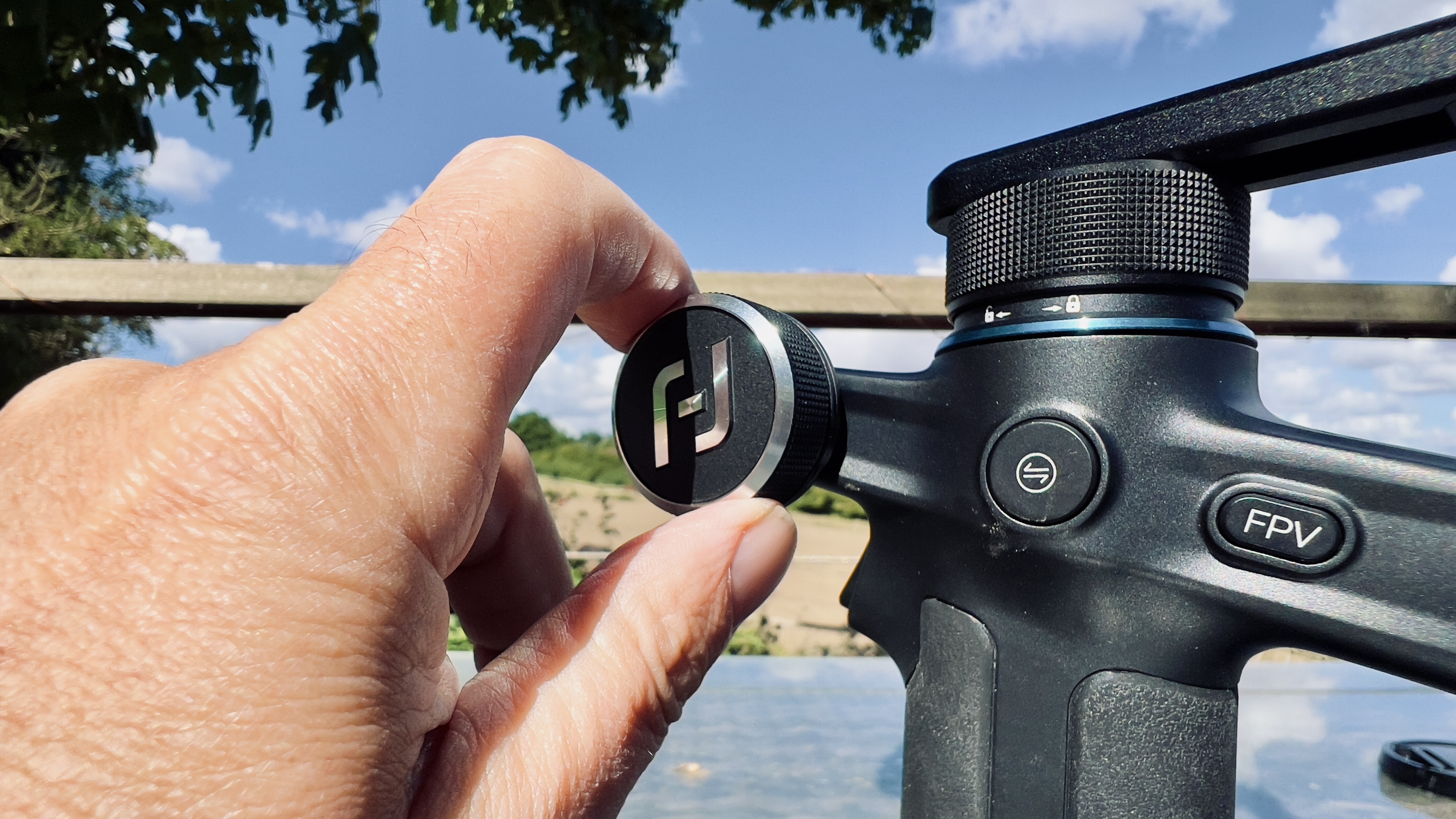
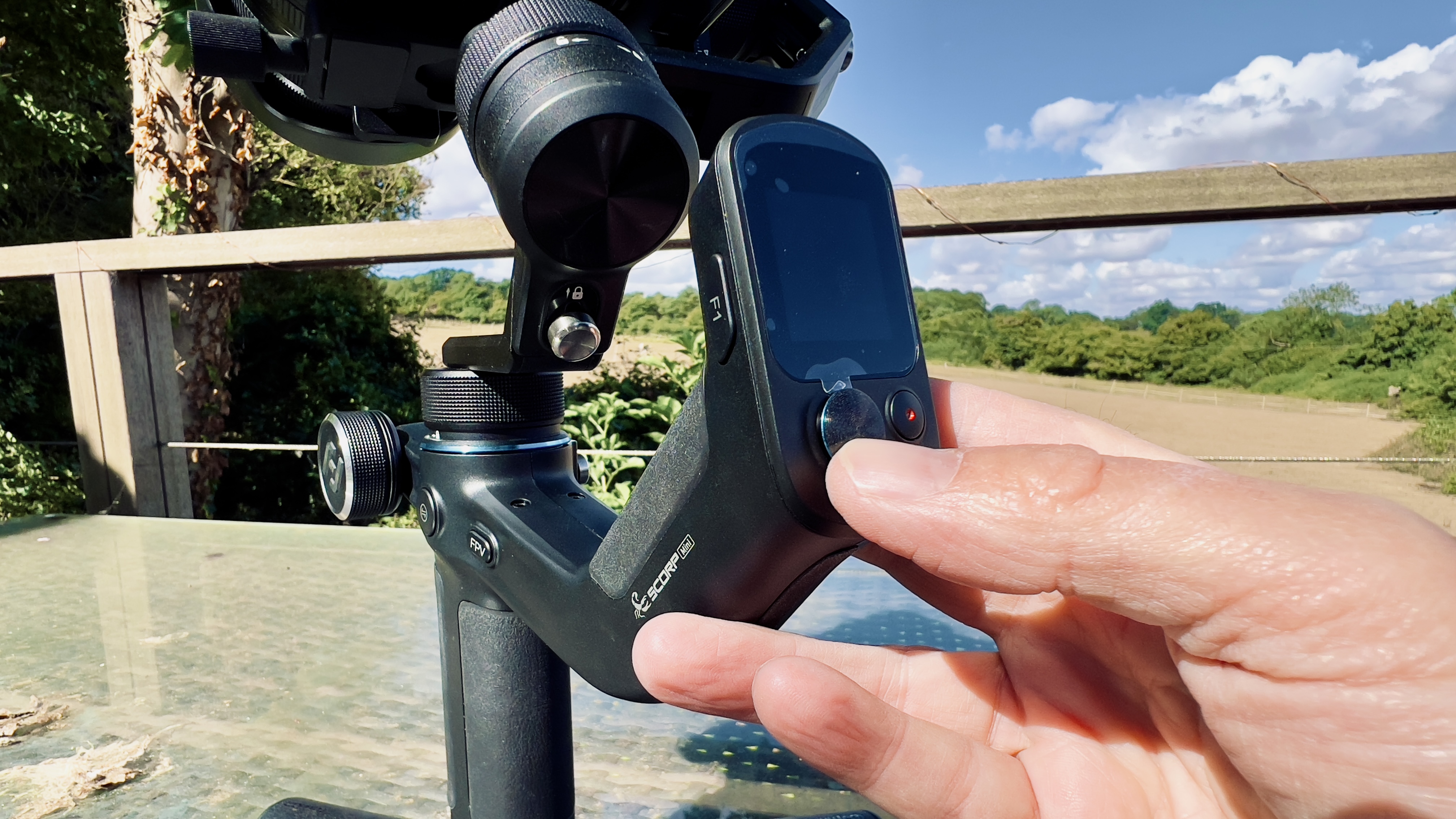
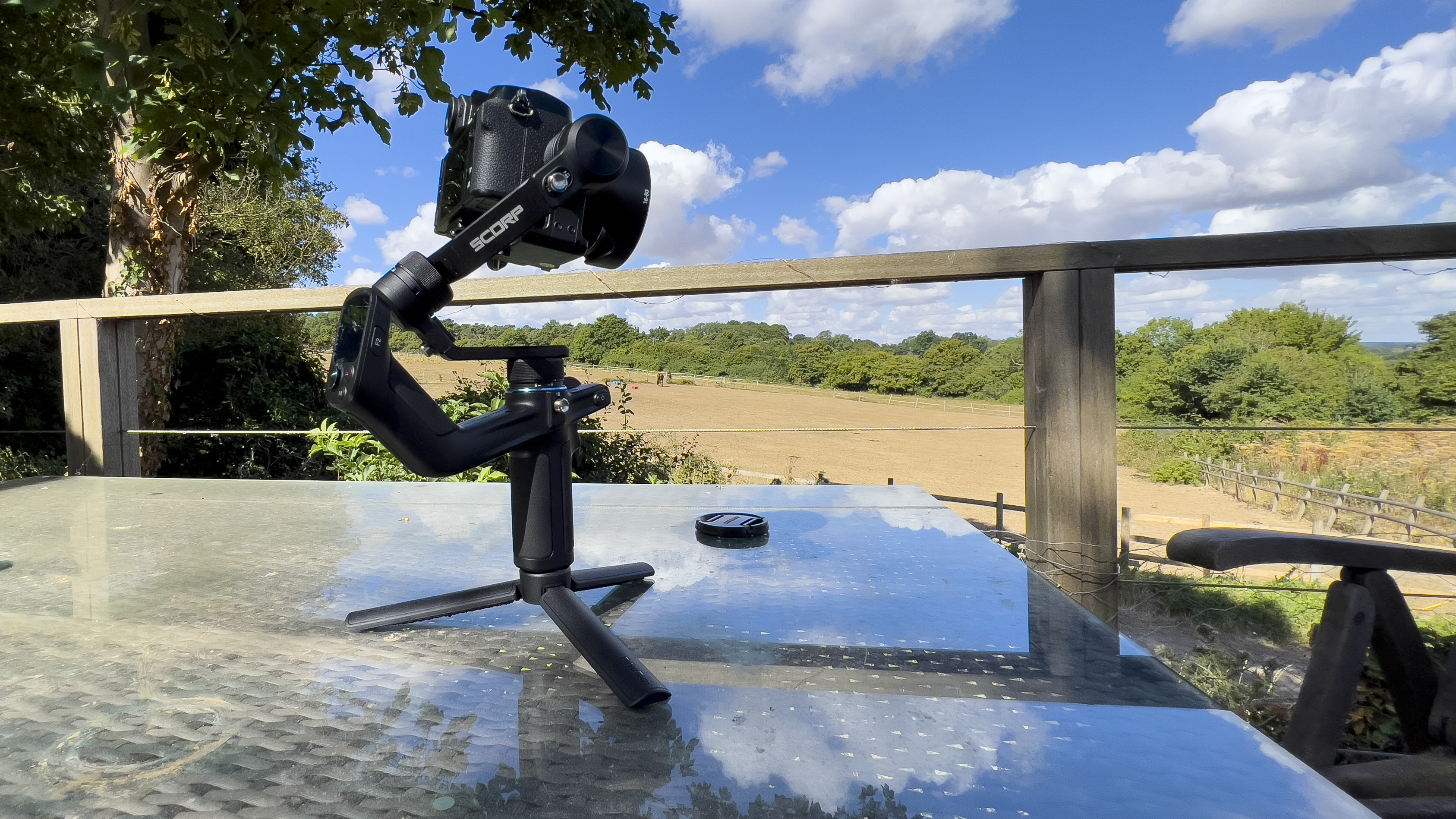
We’ve been testing our most recent batch of 3-axis gimbals by making them carry a mirrorless Fujifilm X-S10 and 16-80mm lens, which weighs in at 952g.
With a weight of only 787g the Scorp Mini is a relative featherweight compared to the Zhiyun Weebill 3 (1.130 Kg) and the Manfrotto MVG460 (1.656 Kg). The Scorp Mini’s light weight is due to it being constructed from aviation grade aluminium and synthetic macromolecular resin.
This means that we could shoot stabilised footage for longer using the X-S10 and the Scorp Mini without getting arm ache. In fact the gimbal and payload are so light that you can lift the lot with one finger hooked under the sling arm.
Performance
Due to its compact stature there was less room to mount our X-S10 and 16-80mm lens on the Scorp Mini. When it was perfectly balanced on the gimbal, the camera’s rear scuffed the edge of the roll motor which impaired the gimbal’s ability to tilt smoothly.
By sliding the camera forward slightly we were able to give the tilt axis free range of movement but at the sacrifice of no longer having the camera perfectly balanced. However, despite the camera being slightly front heavy the Scorp Mini’s motors had no trouble tilting and panning it smoothly. Occasionally the gimbal would vibrate a little but this didn’t impair the quality of the footage as you’ll see from our test video.
Verdict
If you like to shoot footage with a variety of devices (such as smartphones, action and mirrorless cameras) then the amazingly lightweight Scorp Mini should meet your needs. Its lightweight frame takes a lot of the effort out of manoeuvring your camera and it’s relatively quick to set up. Juts bear in mind that given the compact size of the gimbal it won’t suit cameras with a long lens.
George has been freelancing as a photo fixing and creative tutorial writer since 2002, working for award winning titles such as Digital Camera, PhotoPlus, N-Photo and Practical Photoshop. He's expert in communicating the ins and outs of Photoshop and Lightroom, as well as producing video production tutorials on Final Cut Pro and iMovie for magazines such as iCreate and Mac Format. He also produces regular and exclusive Photoshop CC tutorials for his YouTube channel.
